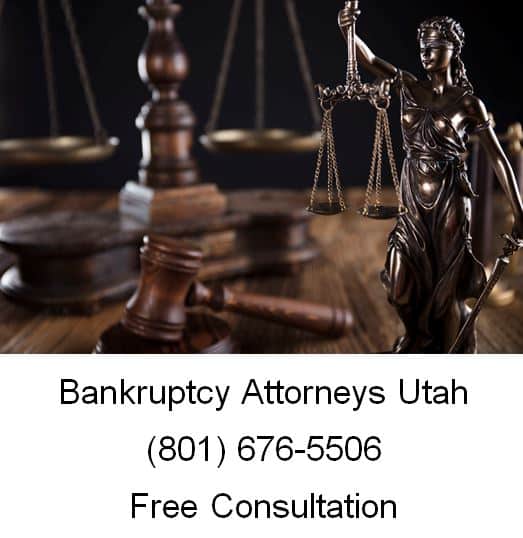
What you can expect when filing for bankruptcy depends, in part, on what type of bankruptcy your company files. The first step is always to seek out a bankruptcy attorney. Your attorney will request that you complete some worksheets that he or she will use, along with the other information you have provided, to complete the bankruptcy petition and schedules.
When the schedules are complete, your attorney will have you review and sign them. Your attorney will then file the documents with the appropriate bankruptcy court. When the petition is filed, the automatic stay goes into effect immediately. That means that collection activities by your company’s creditors must stop.
Chapter 7 Bankruptcy
I’ve seen alot of bankruptcy cases as a Chapter 7 lawyer. In a Chapter 7 case, a trustee is appointed to take possession of the property of the estate. Approximately twenty to forty days after filing the petition, you must attend the “first meeting of creditors,” also known as the “341 meeting.” The trustee will ask you questions about your company’s assets and liabilities, and its income and expenses. Your creditors may also attend that meeting and ask you questions about your company’s financial condition. If your company does not have any assets, the bankruptcy case will end in about three or four months.
If your company has assets, when your case ends will depend on how long it takes the trustee to gather your assets, sell them, and distribute the proceeds to your creditors. If the debtor is an individual, he or she automatically receives a “discharge” at the end of the case unless a creditor or the trustee objects.
Chapter 11 Bankruptcy
If your company files under Chapter 11, your company becomes the “debtor in possession” with the right to retain the property of the estate and operate the business. Trustees are rarely appointed in Chapter 11 cases. Approximately twenty to forty days after filing the petition, you must attend the “first meeting of creditors,” also known as the “341 meeting.” The trustee will ask you questions about your company’s assets and liabilities, and its income and expenses. Your creditors may also attend that meeting and ask you questions about your company’s financial condition.
The United States Trustee may appoint a “creditor’s committee” which usually consists of your company’s seven largest unsecured creditors. The creditor’s committee consults with the debtor, investigates the debtor’s conduct and financial condition, and participates in drafting the plan of reorganization. The debtor has the exclusive right to file a plan of reorganization for the first 120 days after filing. The debtor must also file a “disclosure statement” that contains financial information about the debtor and its business.
The plan of reorganization outlines how the debtor will deal with its creditors. The plan typically divides creditors into classes. Creditors vote on the plan of reorganization. Each class of creditors must accept the plan as it applies to that class. Usually, creditors that hold at least two-thirds in amount and more than one-half in number of the claims in a class must accept (vote yes to) the plan.
However, if the court finds that the plan is “fair and equitable” and does not discriminate unfairly, the court may confirm (“cram down”) the plan anyway. Plans may provide for payments to creditors over any reasonable period of time. Sometimes, payments on secured debts are extended over a period of twenty to thirty years.
Confirmation of the plan vests all property of the estate in the debtor and discharges all debts and liens that arose before the confirmation date except as provided for in the plan. The debtor has 180 days from the filing of the petition to obtain acceptance of the plan by creditors. Some plans (usually those that the debtor and creditors have mutually agreed to prior to filing) can be confirmed in two or three months.
Chapter 13 Bankruptcy
A trustee is appointed in a Chapter 13 case, but does not take possession of the property of the estate. Approximately twenty to forty days after filing the petition, you must attend the “first meeting of creditors,” also known as the “341 meeting.” The trustee will ask you questions about your company’s assets and liabilities, and its income and expenses. Your creditors may also attend that meeting and ask you questions about your financial condition.
Individuals engaged in business and filing under Chapter 13 must file a plan within fifteen days of filing a bankruptcy petition. The plan must devote all of the debtor’s disposable income to payments under the plan for the next three to five years. The debtor must begin making payments under the plan to the Chapter 13 trustee within thirty days after the plan is filed. Creditors do not vote on the plan.
If the plan complies with the requirements of the Bankruptcy Code, the court must confirm the plan. The confirmation hearing is usually held about four months after the case is filed. A discharge is granted when the debtor has completed all payments under the plan.
Bankruptcy Lawyer Free Consultation
If you have a bankruptcy question, or need to file a bankruptcy case, call Ascent Law now at (801) 676-5506. We can help you now. Come in or call in for your free consultation.
8833 S. Redwood Road, Suite C
West Jordan, Utah
84088 United States
Telephone: (801) 676-5506
Recent Posts
Utah Divorce and Guardian ad Litem

